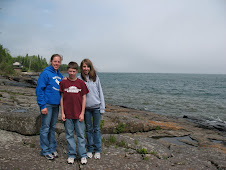This week I attended a lecture titled, “Islam and Christian Muslim Dialogue: Theological and Political Challenge and Opportunity“ given by Dr. Charles Ahjad-Ali, Martin Luther King Jr. Professor at Luther Seminary. Sounds like pretty heavy stuff, huh? That’s what I was thinking when I heard the lecture’s title and when I learned Dr. Charles Ahjad-Ali’s title, too. It may seem strange that I chose to attend this lecture as part of the requirement for this Educational Psychology class. After all, the realms of religion and politics are viewed as dangerous, controversial areas that do not belong in public education. As it turned out, this rather informal lecture was less political and more theological/historical, and in all honesty, not at all related to education or educational psychology. Still, I was struck by a few of the main ideas Dr. Ahjad-Ali mentioned, and in reflecting further upon them, I think I might have found a few important connections to education psychology.
Dr. Ahjad-Ali’s lecture focused on the intimate yet volatile relationship between Christianity and Islam, and the central question that seemed to shape most of his lecture was “How do we live together as Muslims and Christians?” He made the point that in general, the Christian perception of Islam is an “us against them” mentality, or the idea that “if you’re not with us, you’re against us.” He also defined this frame of mind in another way; he stated that some Christians seem to think: “we are children of the light, while they are children of darkness” [‘they’ meaning Muslims and other non-Christians]. This poignantly expressed idea especially caught my attention as something potentially applicable to education. I think it can be incredibly easy at times for teachers to let their own biases or personal prejudices into the classroom. I’d like to think this never occurs on purpose, and in reality, I’m sure most incidences of intolerance or partiality on the part of the teacher are accidental. Nevertheless, the idea of “us” versus “them” does exist in the world of education. There are defined roles and groups in the classroom, all juxtaposed against one another: the teacher versus the students, the brainiac versus the learning disabled, the economically advantaged versus the disadvantaged, the class-clown versus the social outcast, and the list continues. As a teacher, I believe it must be difficult at times to avoid classifying or pigeonholing students, or even dismissing them altogether as not worth the extra effort. Once children have been labeled as naughty, misbehavers, or as bad kids, it becomes even more problematic and challenging to truly reach them. It is these perceived “children of darkness,” the children who have been branded as outsiders, who really need a teacher to struggle with and for them, to actually care and value them as students and as people. Ideally, boundaries between students in the classroom, as dictated by physical appearance, mental ability, cultural background, religious preference, or socio-economic status, do not exist; there is no “us versus them” or “children of light” as opposed to “children of darkness.” Indeed, in this ideal setting, both students and teachers refuse to categorize one another and instead, work to sincerely understand and appreciate the ideas, efforts, and contributions of all.
Well, there is so much more I could say on the above topic. However, this entry is long enough already, so I’ll try to use the words of Dr. Ahjad-Ali to summarize what I’ve been thinking. The following is a core component to Dr. Ahjad-Ali’s personal philosophy: “We cannot be passive in the face of injustice.” What a profound concept. I feel strongly that this belief can and should be applied by teachers everywhere to ensure that their classrooms are safe, thriving environments where all children can reach their full potential.
ElMusedTech is Moving!
4 years ago

No comments:
Post a Comment